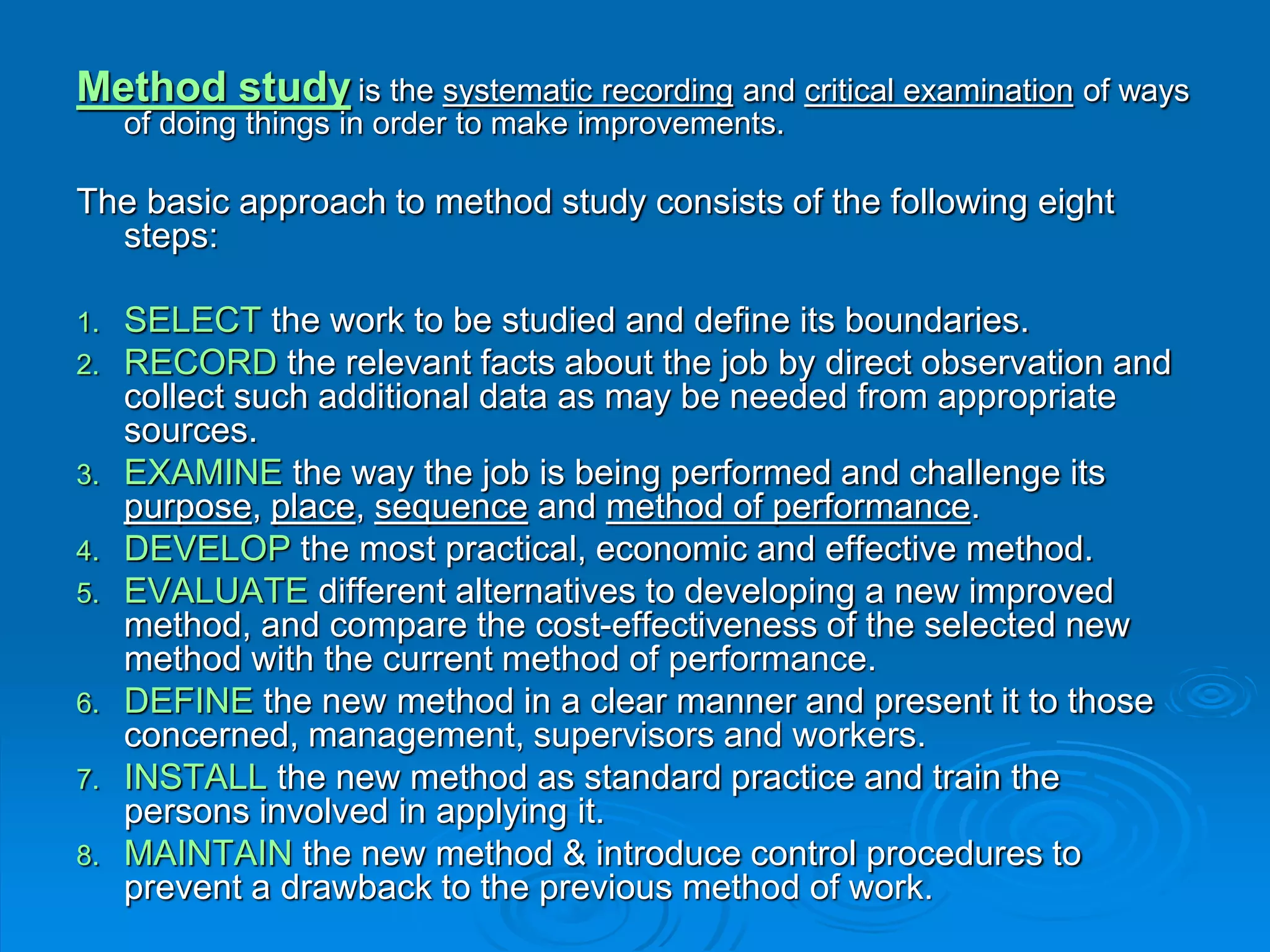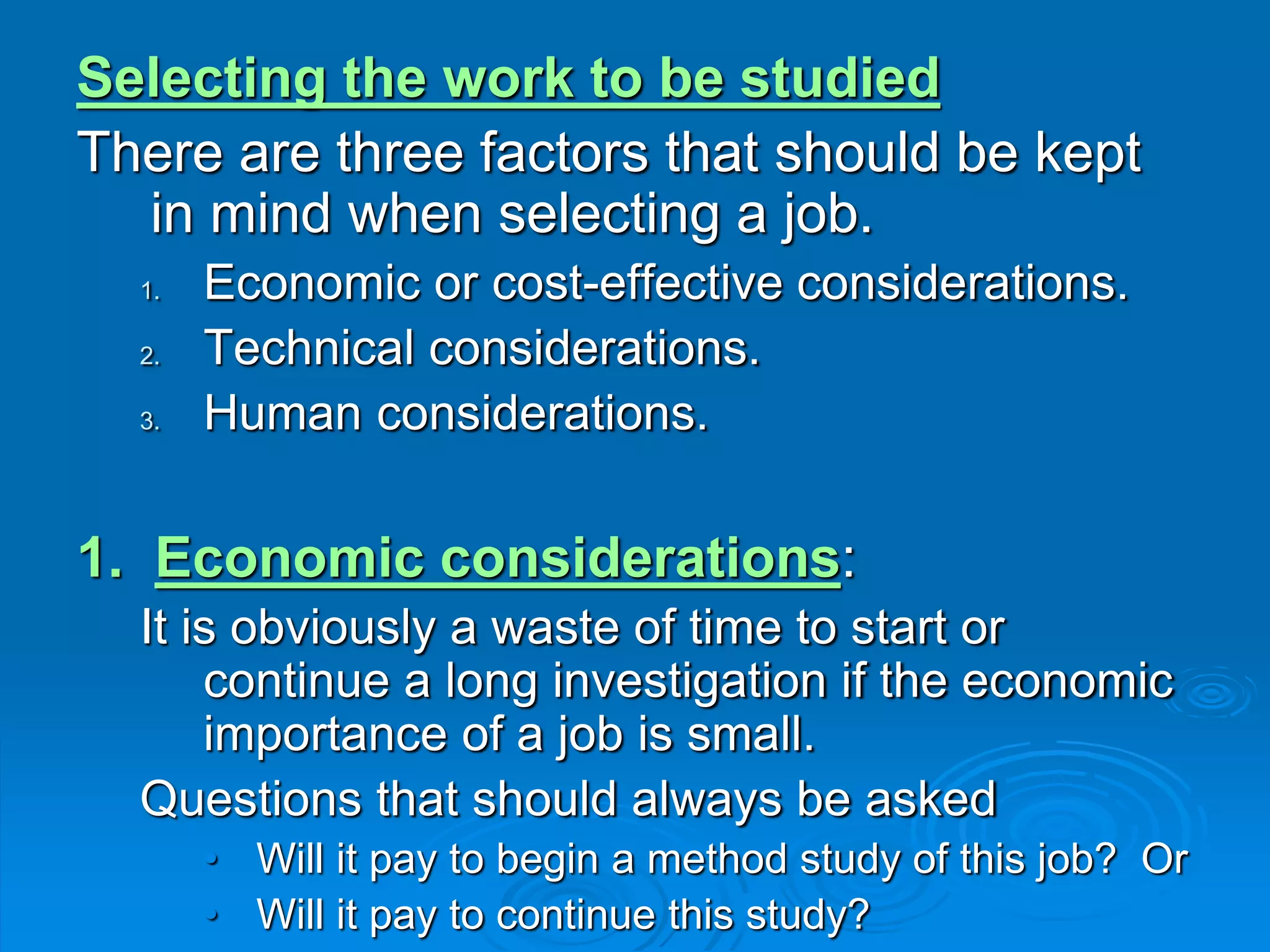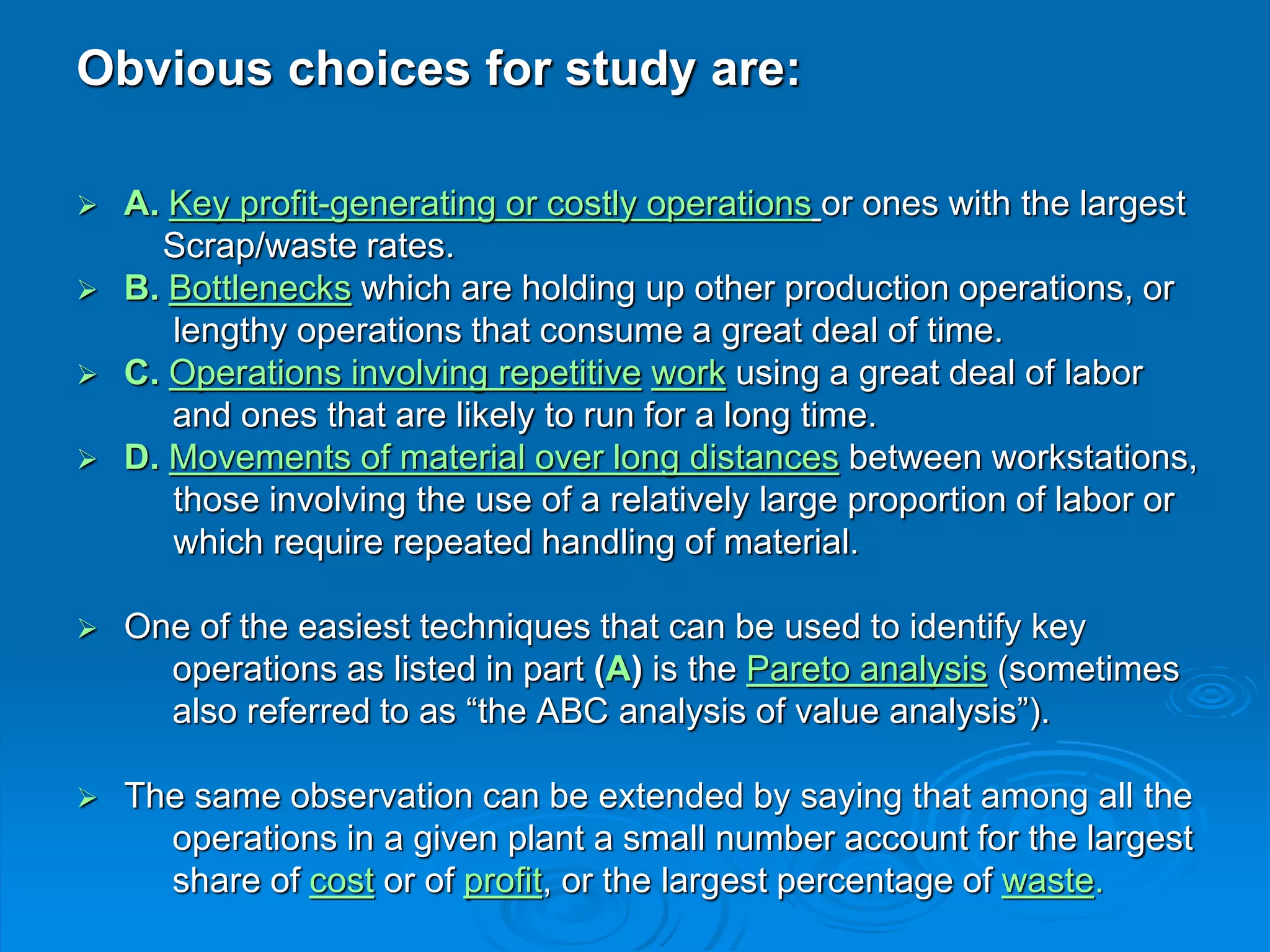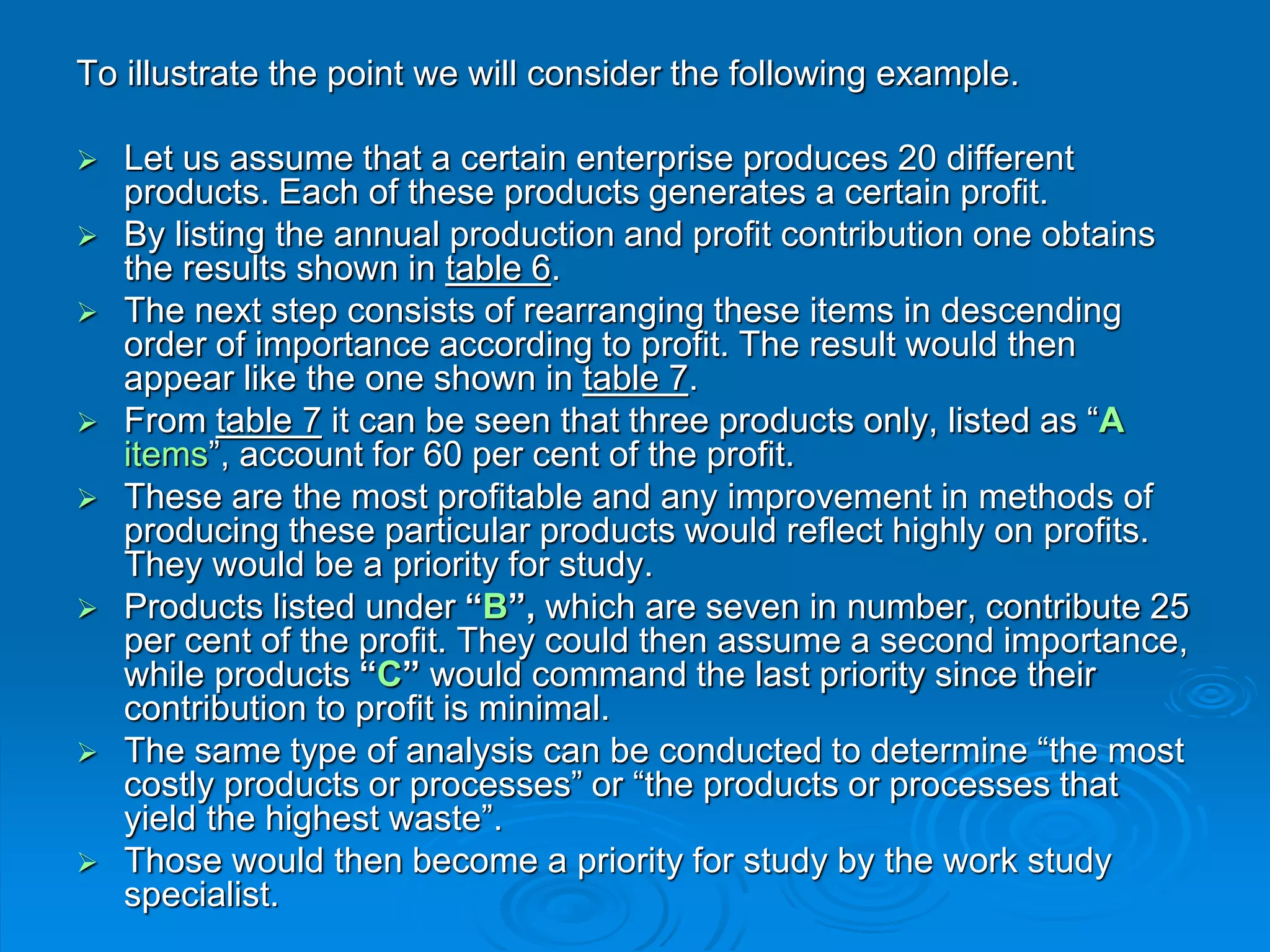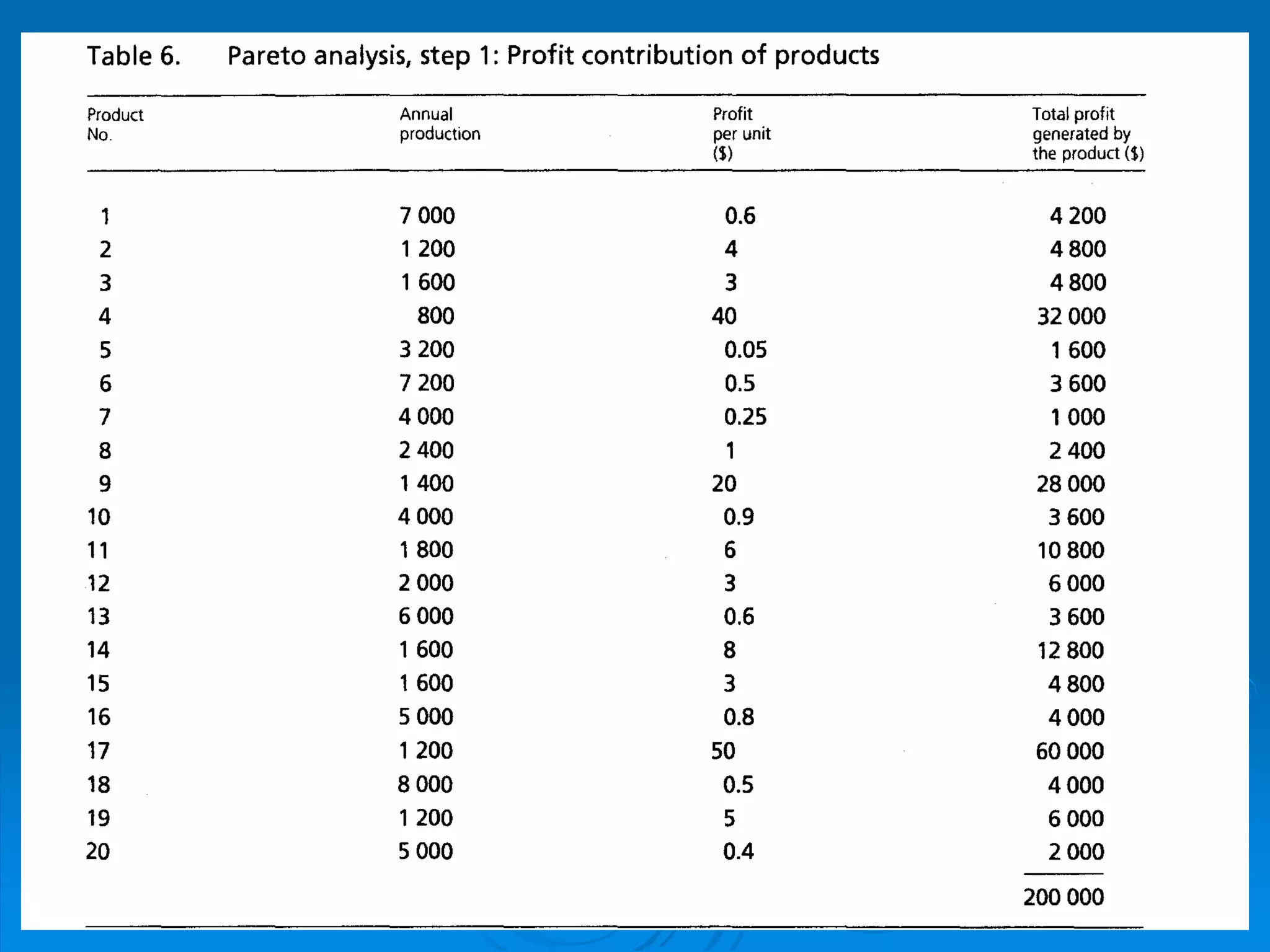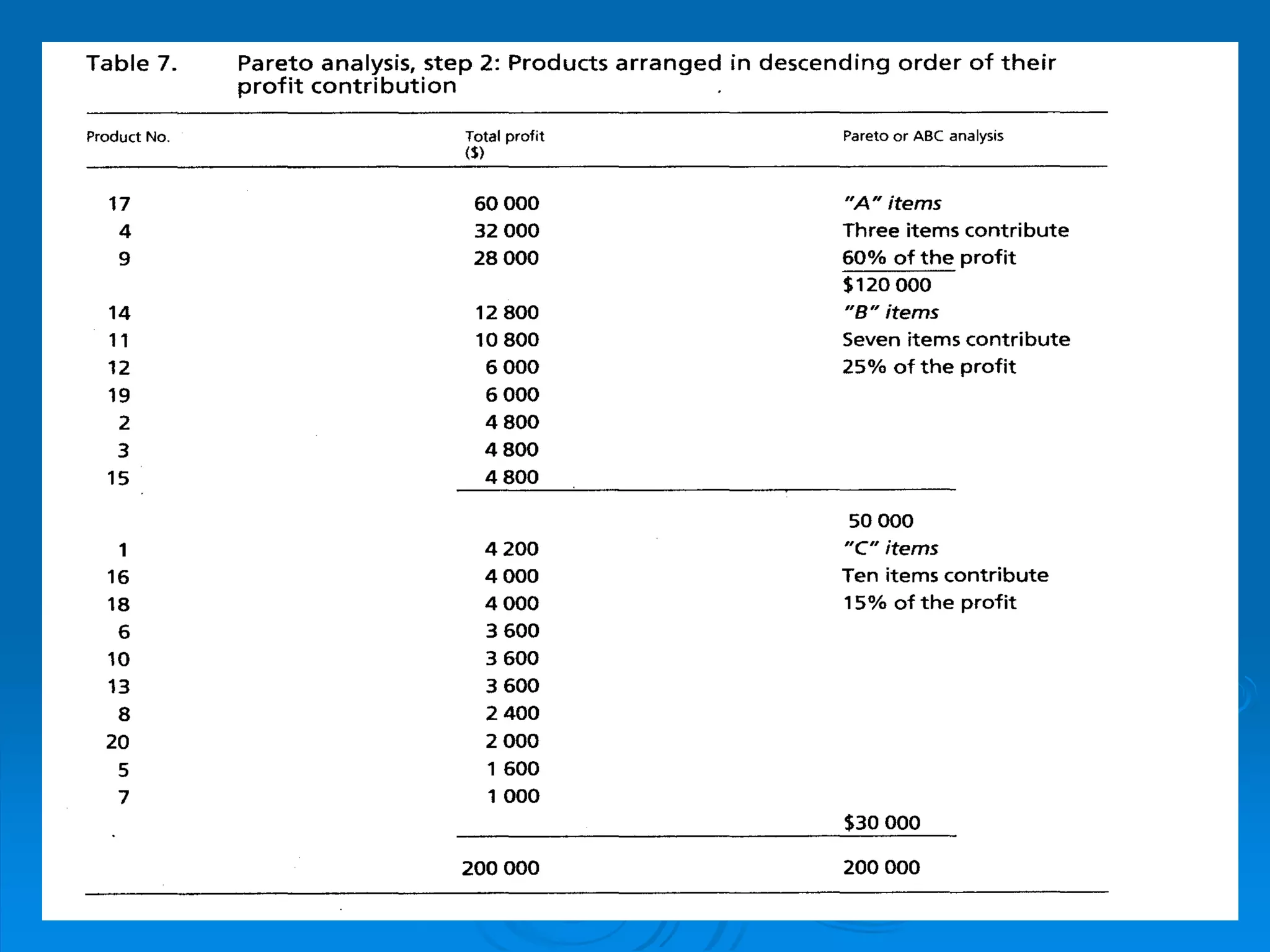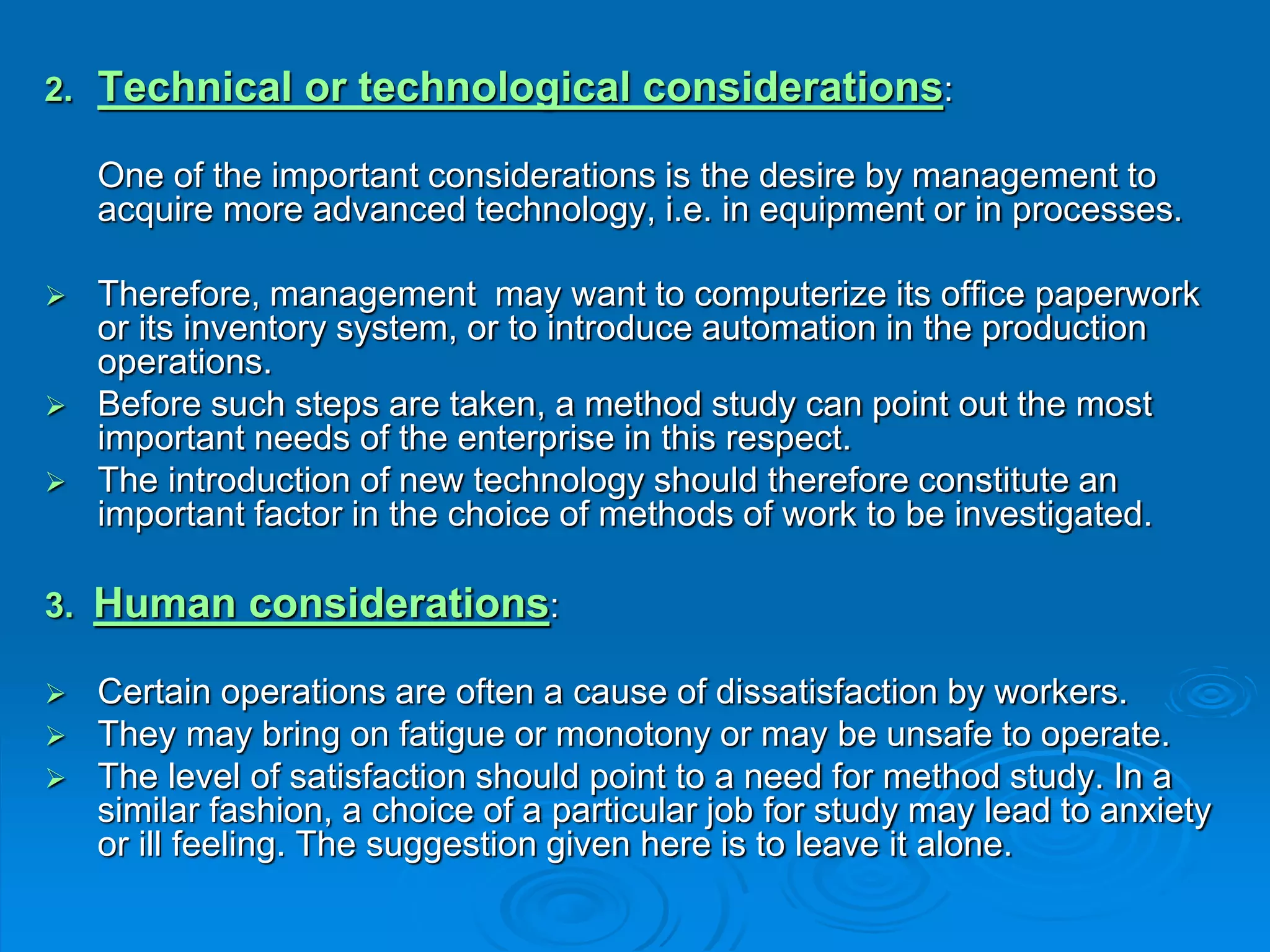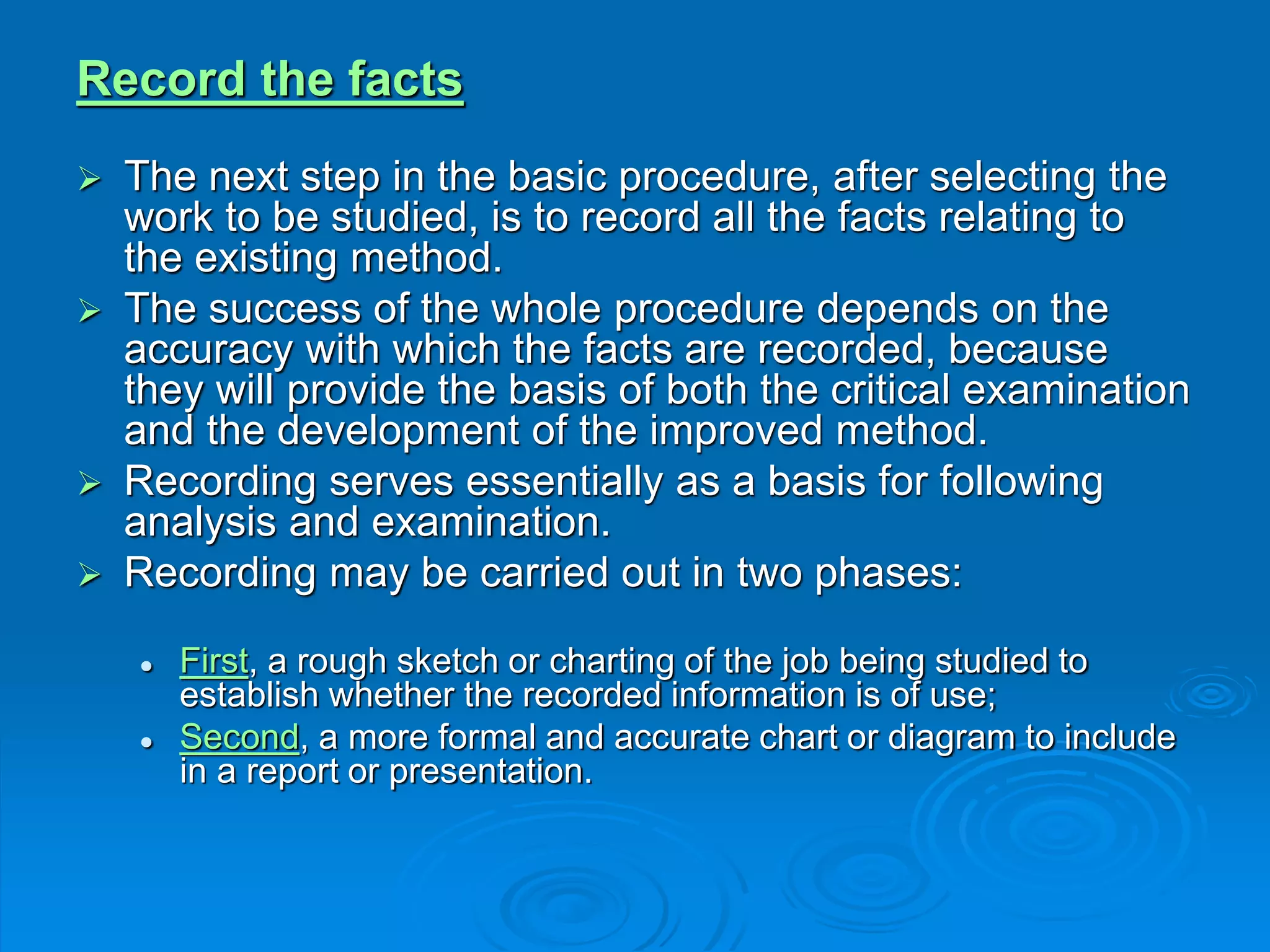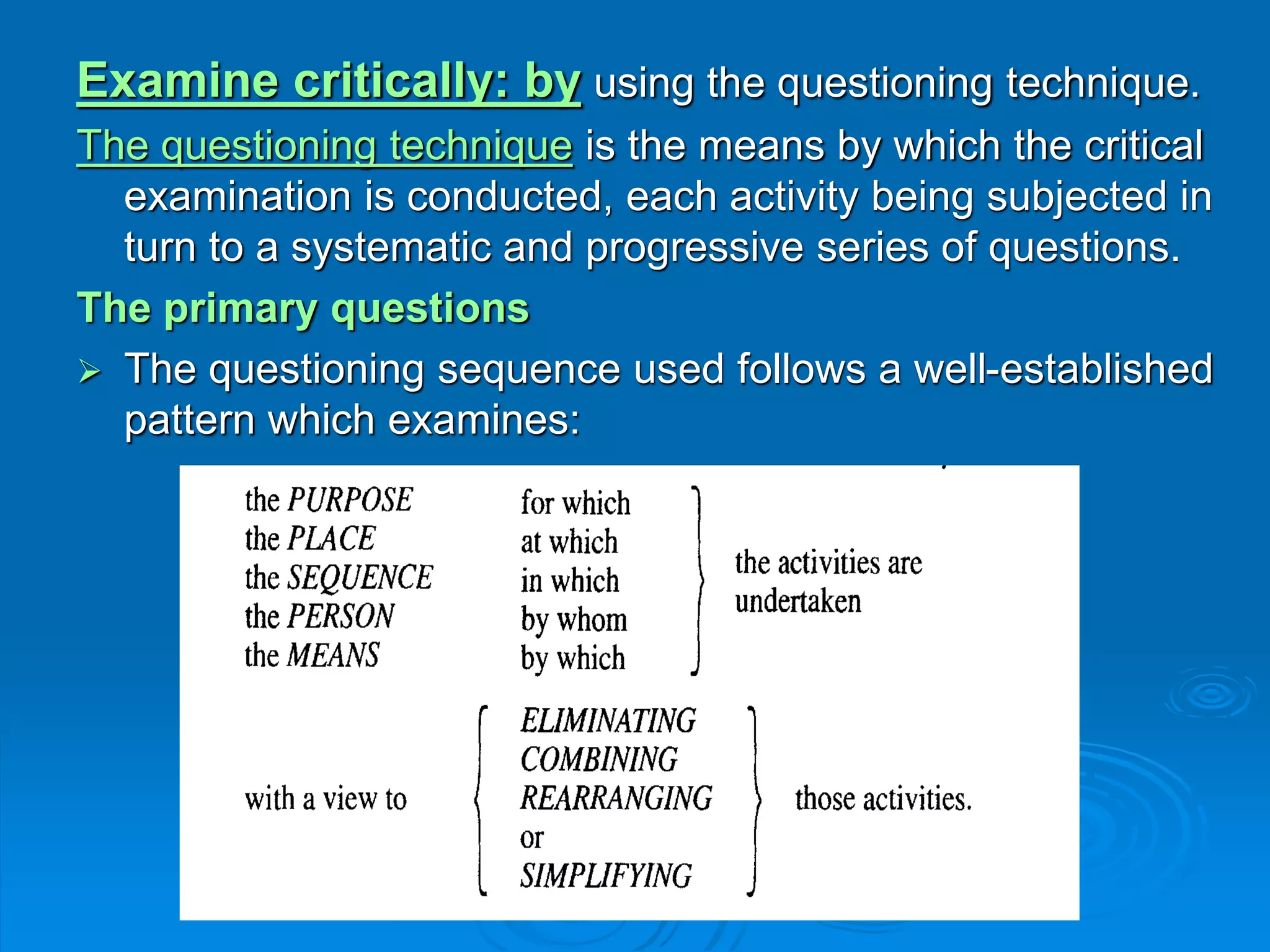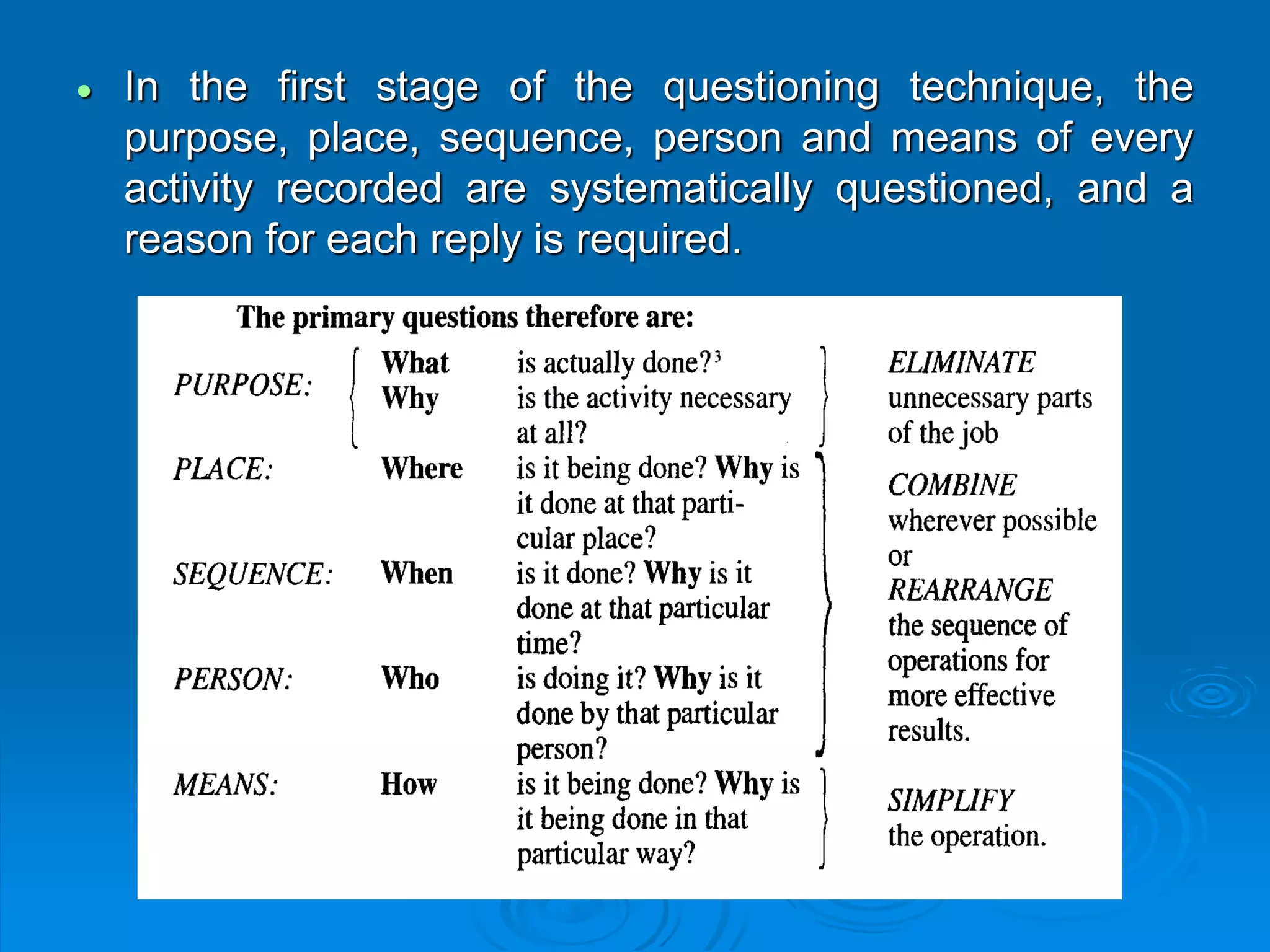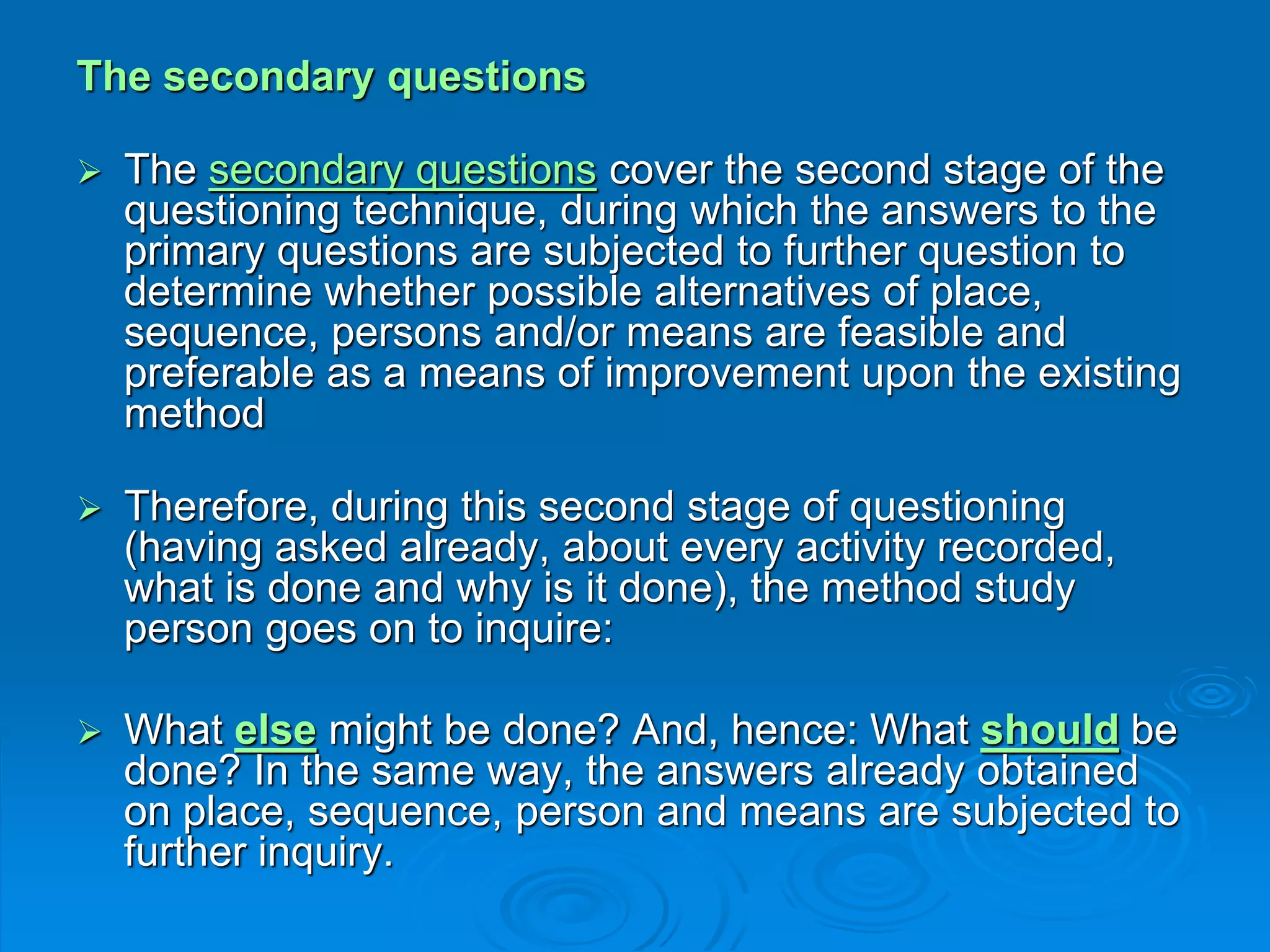Method study is the systematic examination and analysis of work processes to identify opportunities for improvement. The key steps in the method study process are:
1. Selecting a work process to study based on economic, technical, and human factors. Processes that are costly, impact bottlenecks, or involve repetitive labor are prioritized.
2. Accurately recording the details of the current process through direct observation.
3. Critically examining the process using a questioning technique that evaluates the purpose, place, sequence, person, and means of each activity to identify alternatives and determine the most effective approach.
The systematic application of this questioning technique is essential for successfully analyzing work processes and developing improved methods.

